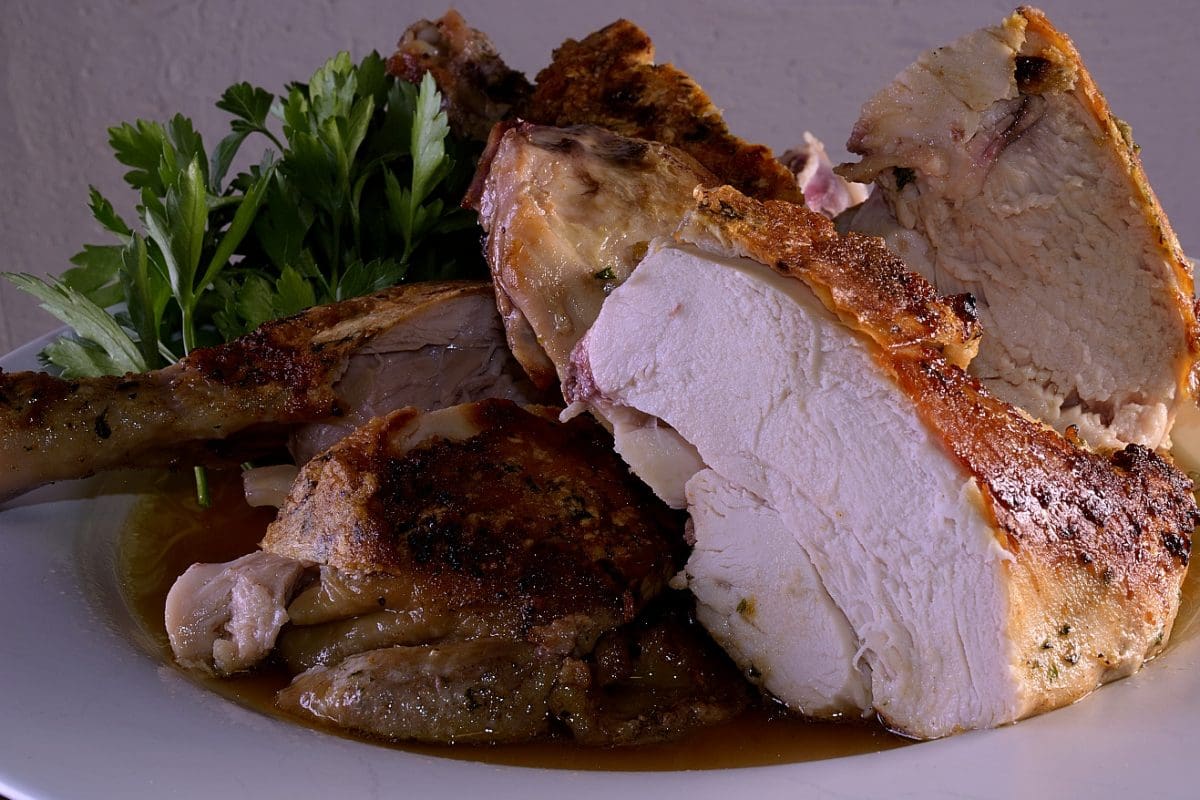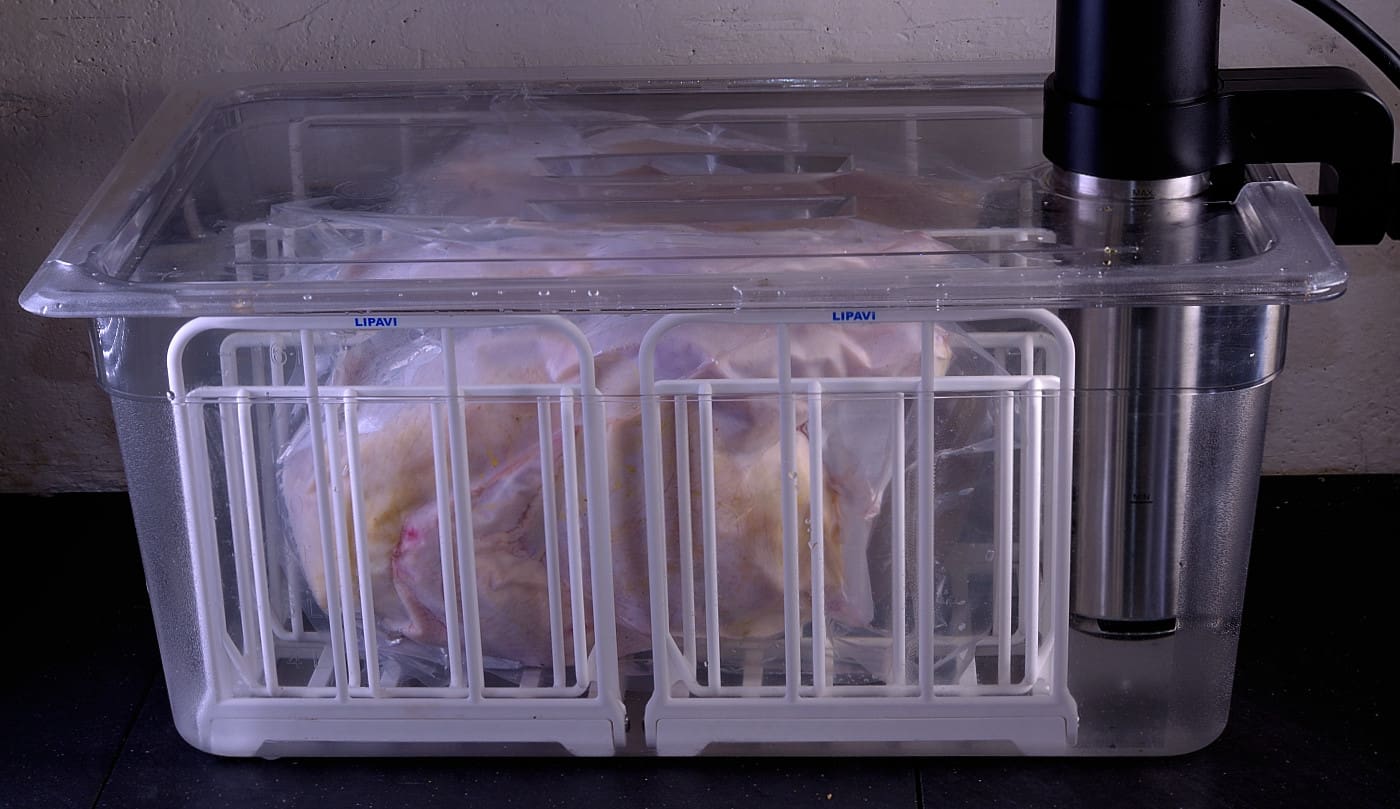
Above: Lipavi C15 container, N15 polycarbonate racks. Lipavi C15L lid.
Serves 2-3
Level of difficulty 2.50
A Brick by Any Other Name
Steak/bacon weights are common in coffee shops and readily available on line. The steady pressure equalizes the transference of heat. Some frantic cooks tend to over-use them–pressing down in a vain attempt to accelerate the cooking process. This squeezes out juices but does little else. Let the weight–and the heat–do the work.
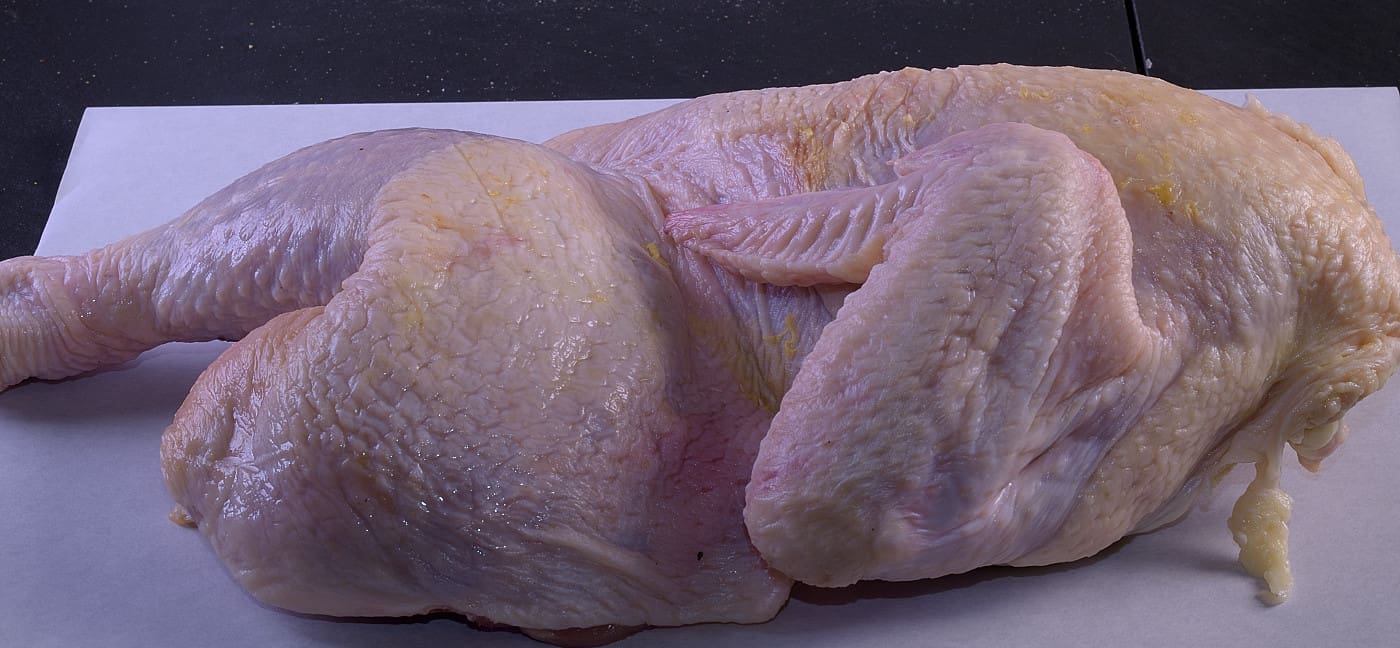
Note: Half chickens may be available in the butcher’s case at the local market. You can always ask the attendant to split one for you. If you scroll to the bottom of the page, we explain how to split a whole chicken into halves.
Procedure:
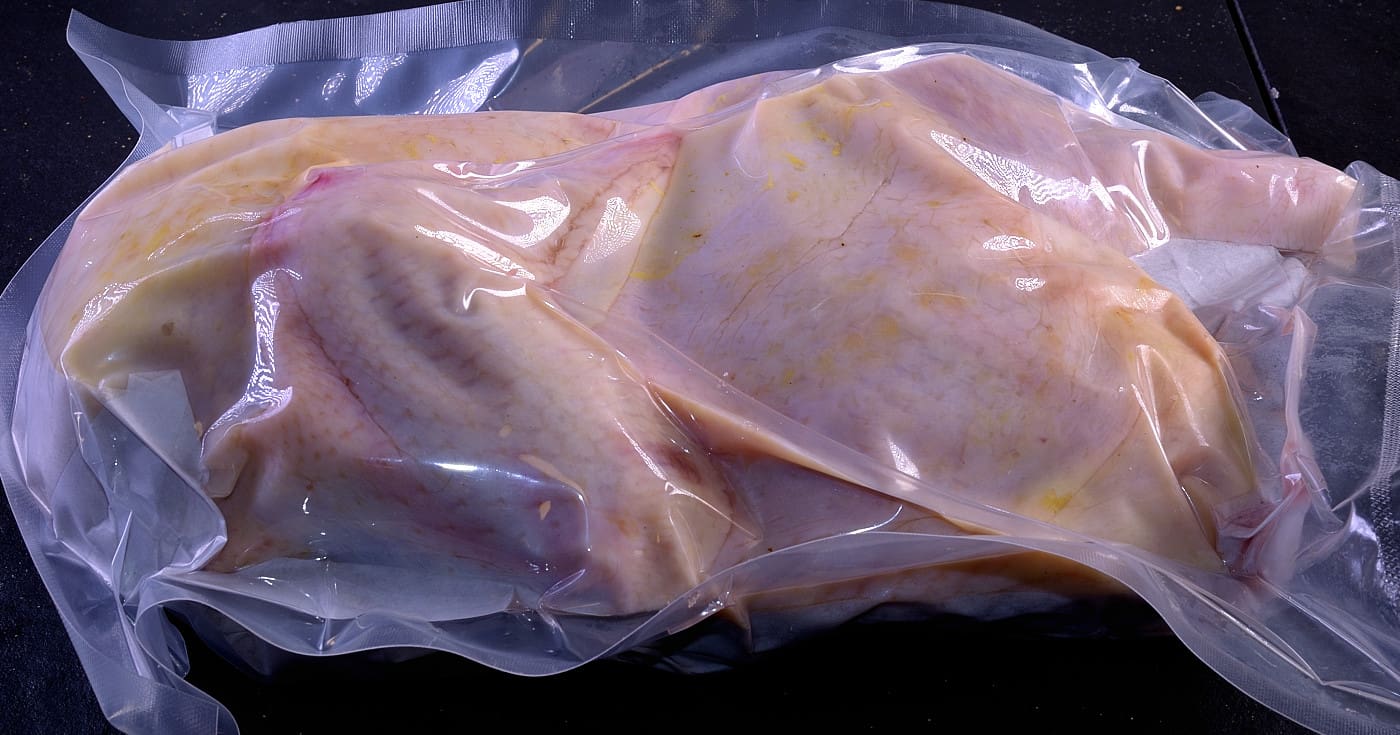
Preheat your sous vide bath to 135 F/57 C. Vacuum seal the half chicken in heat rated plastic bags. I use a piece of parchment to line the side with the sharp bones so they do not puncture the bag.

Sous vide process the packages for a minimum of 5 hours.
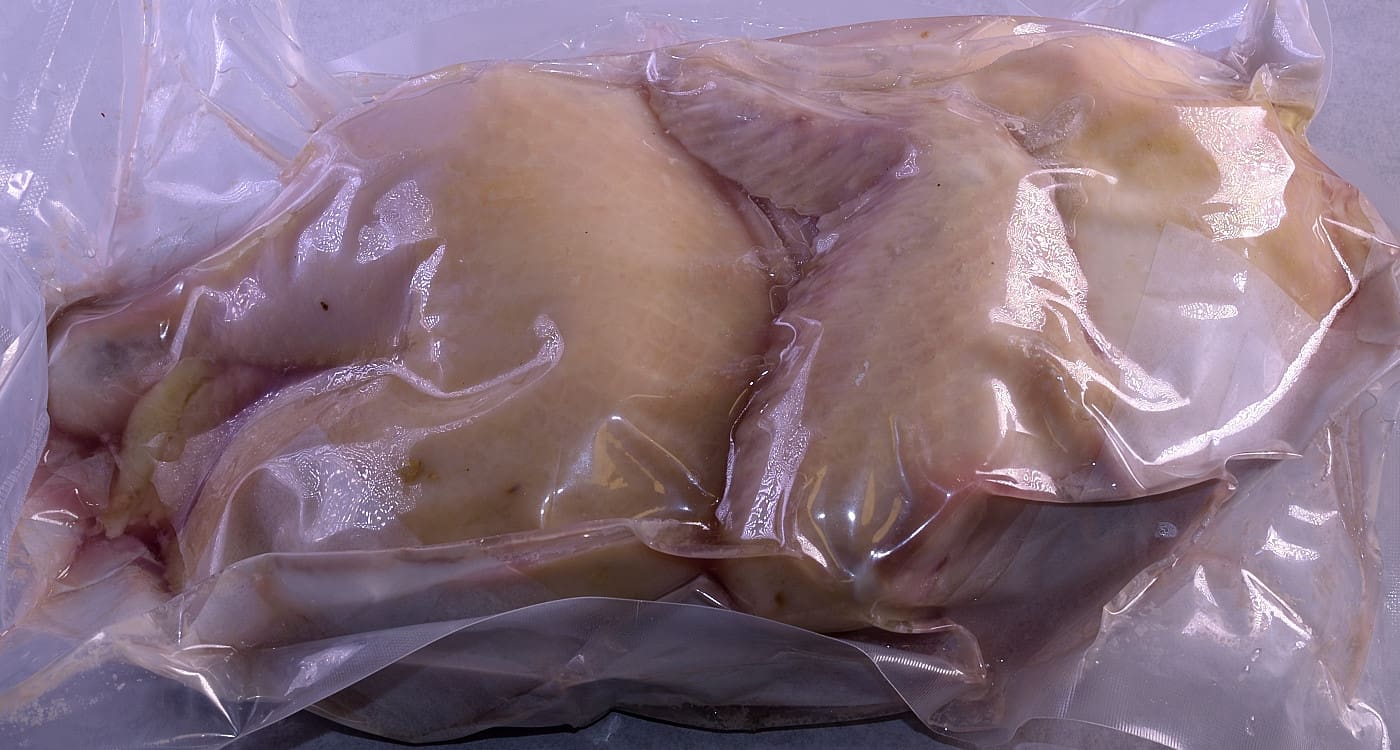
When the interval has elapsed, remove the package from the bath and place on a clean surface–I like to use parchment.
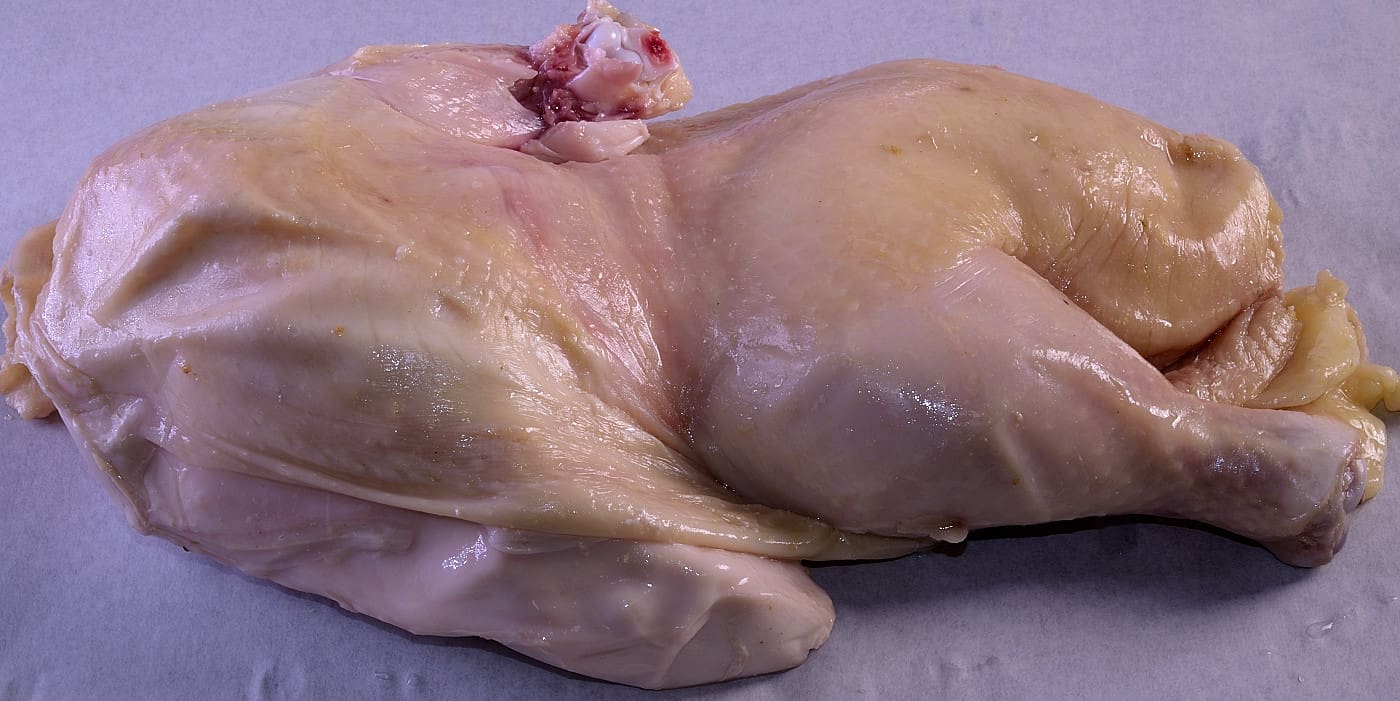
Remove the chicken from the bag. Harvest the juices and set aside. Pat the chicken dry with a clean towel. This prevents sticking. Remove the wing so it doesn’t interfere with the browning of the skin on the breast.
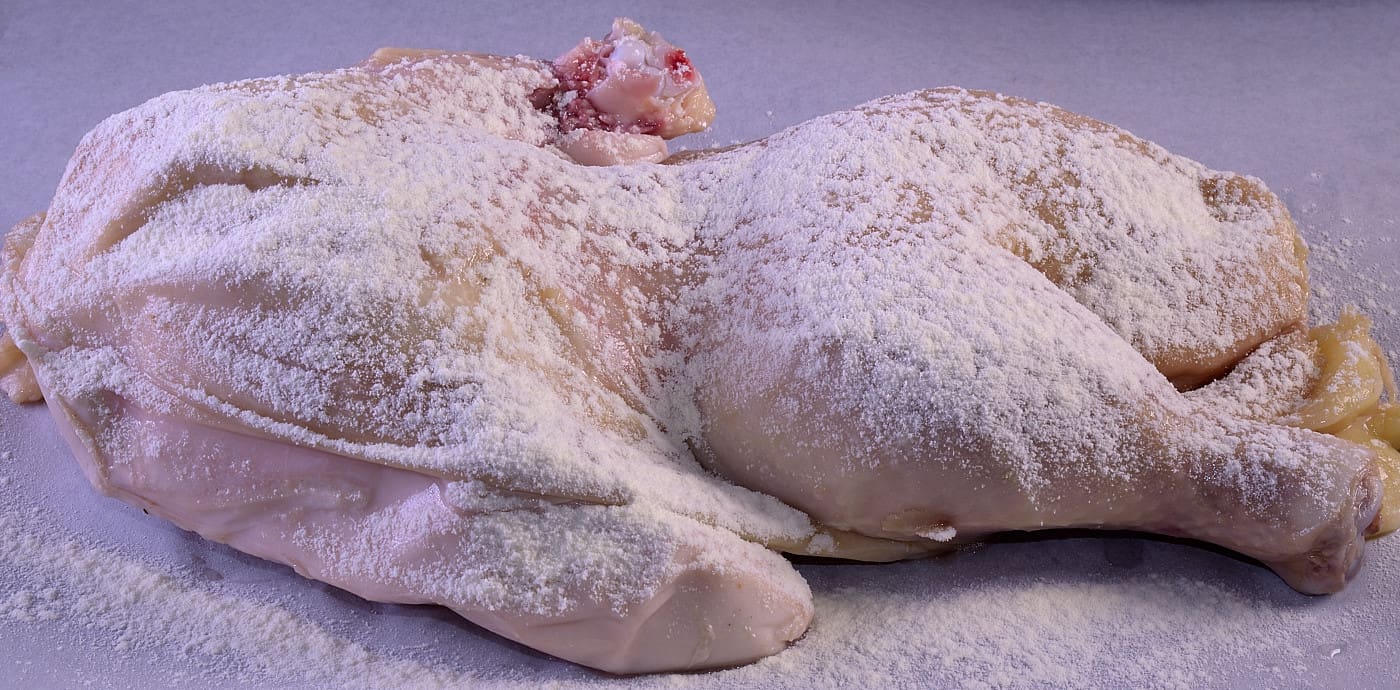
Dust with powdered egg white. A small amount of fresh egg white can also be used to create a sticky surface.
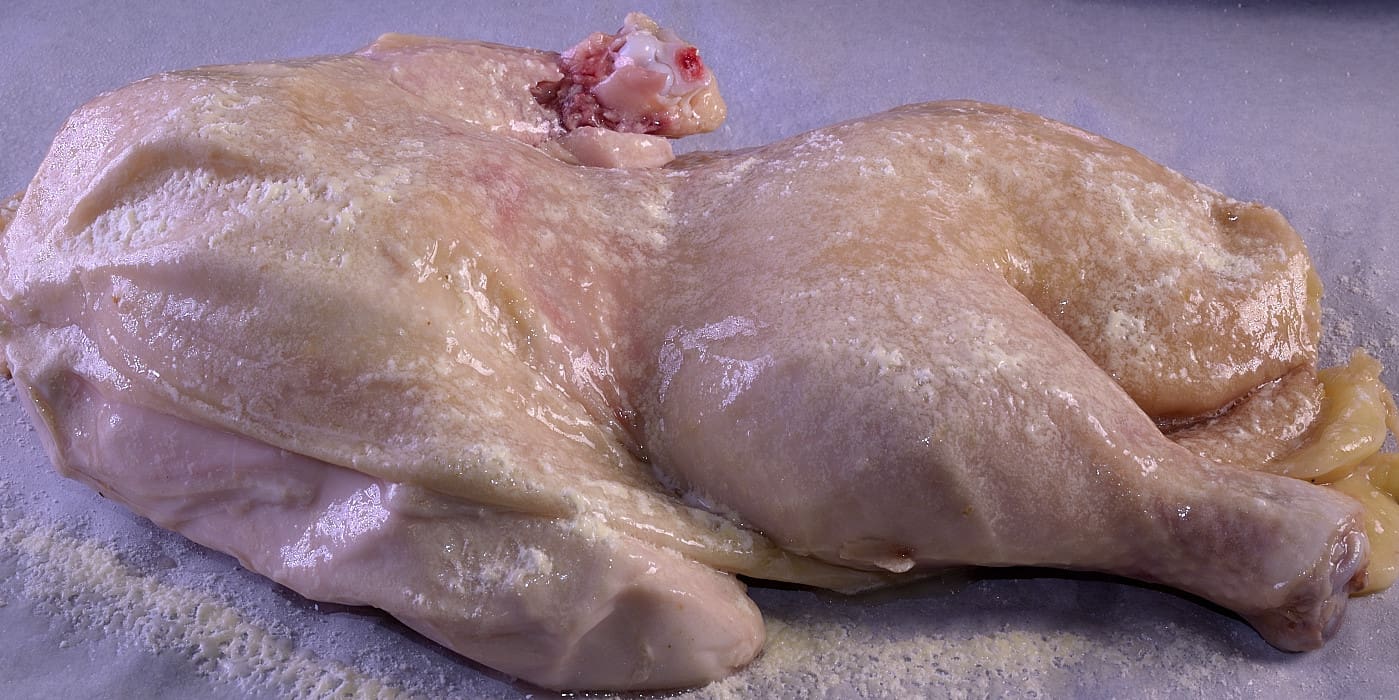
Mist with water to dissolve the powdered egg whites.
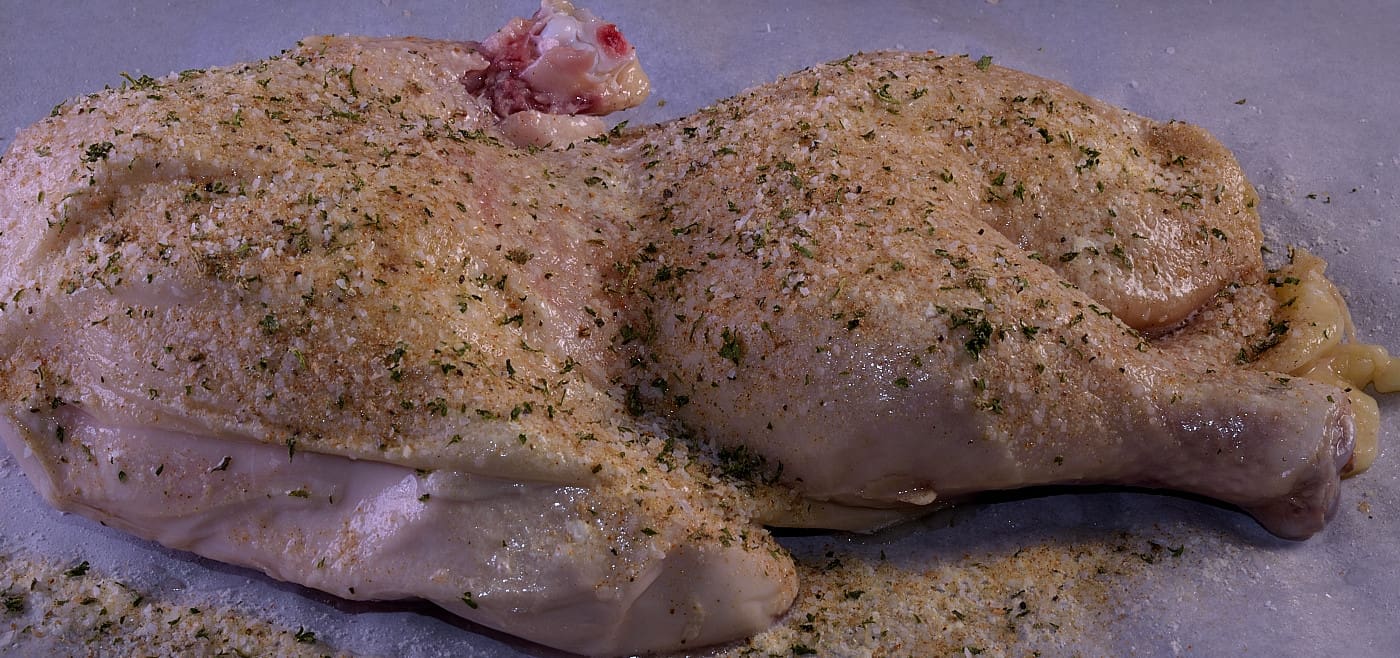
Sprinkle with your favorite seasonings or one of our recipes linked HERE.
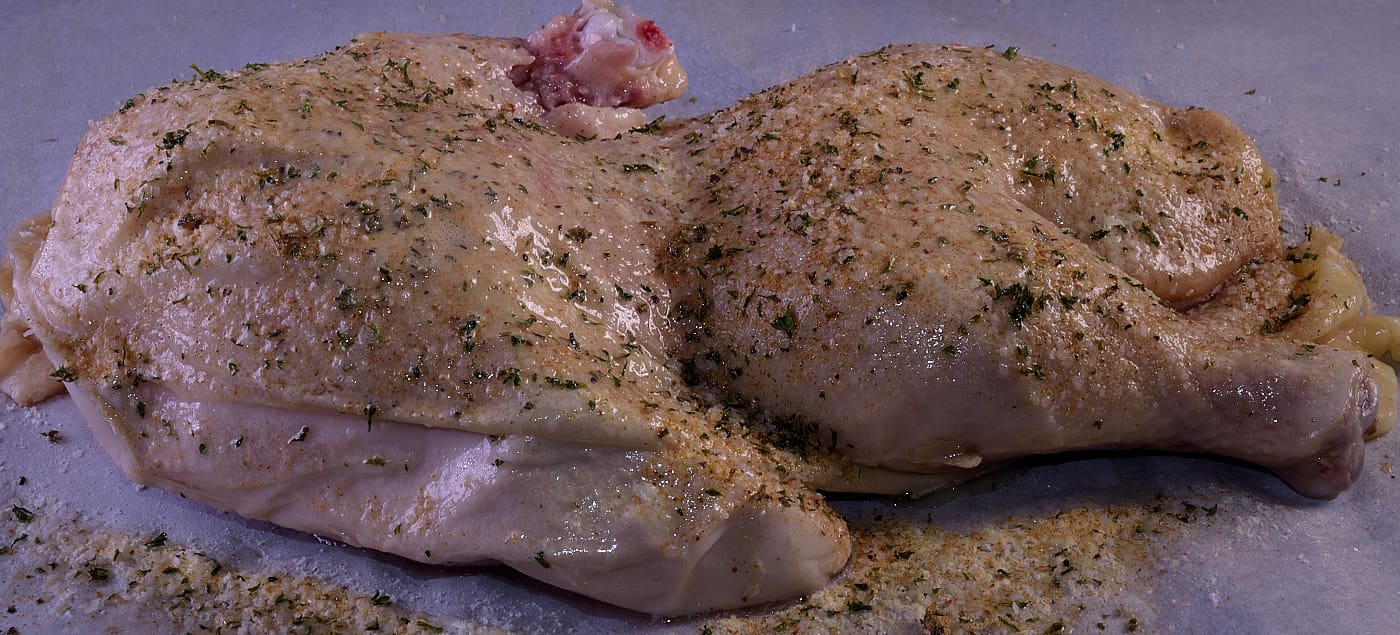
Mist or drizzle with oil and allow to rest for five minutes.
Heat a thick bottomed skillet to 250 F/121 C.

Add enough vegetable oil to cover the bottom of the pan.
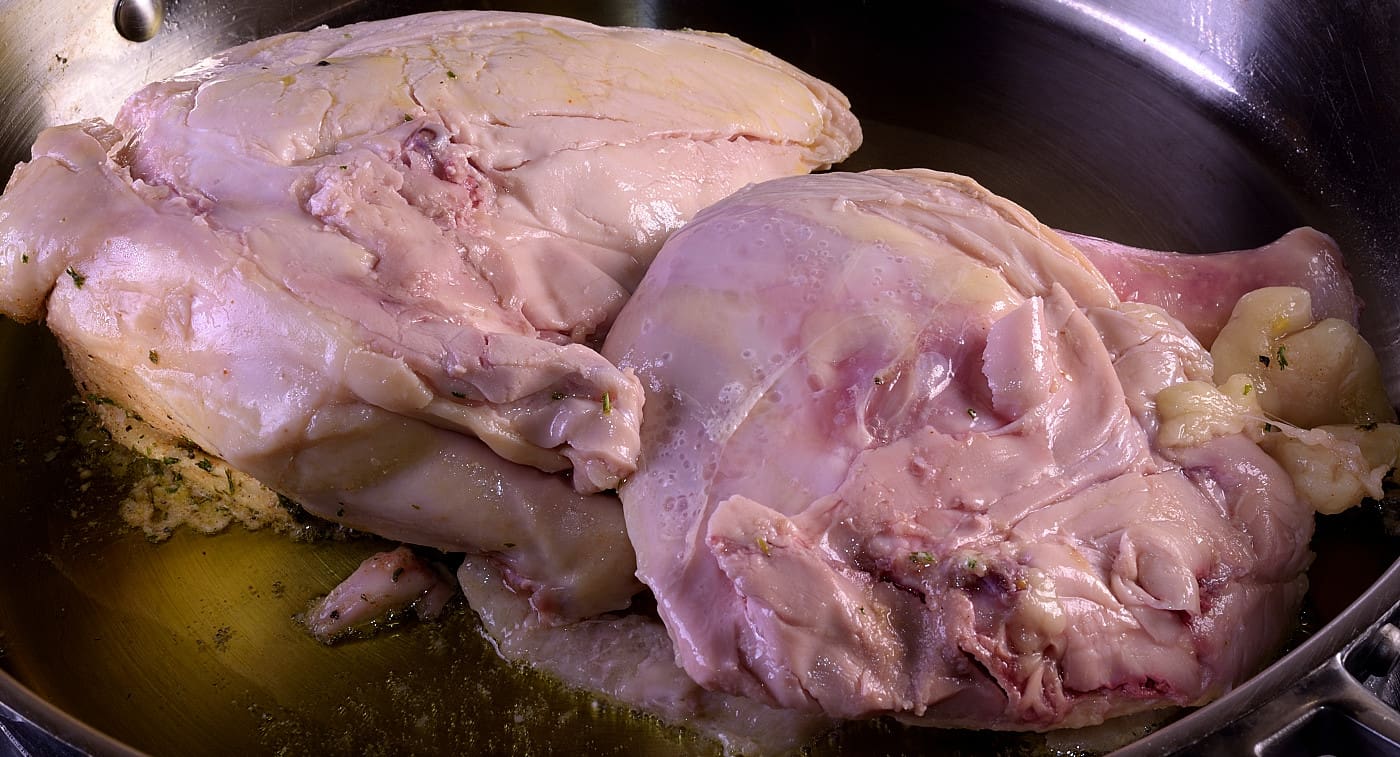
Stage the chicken into the pan with the skin side down.
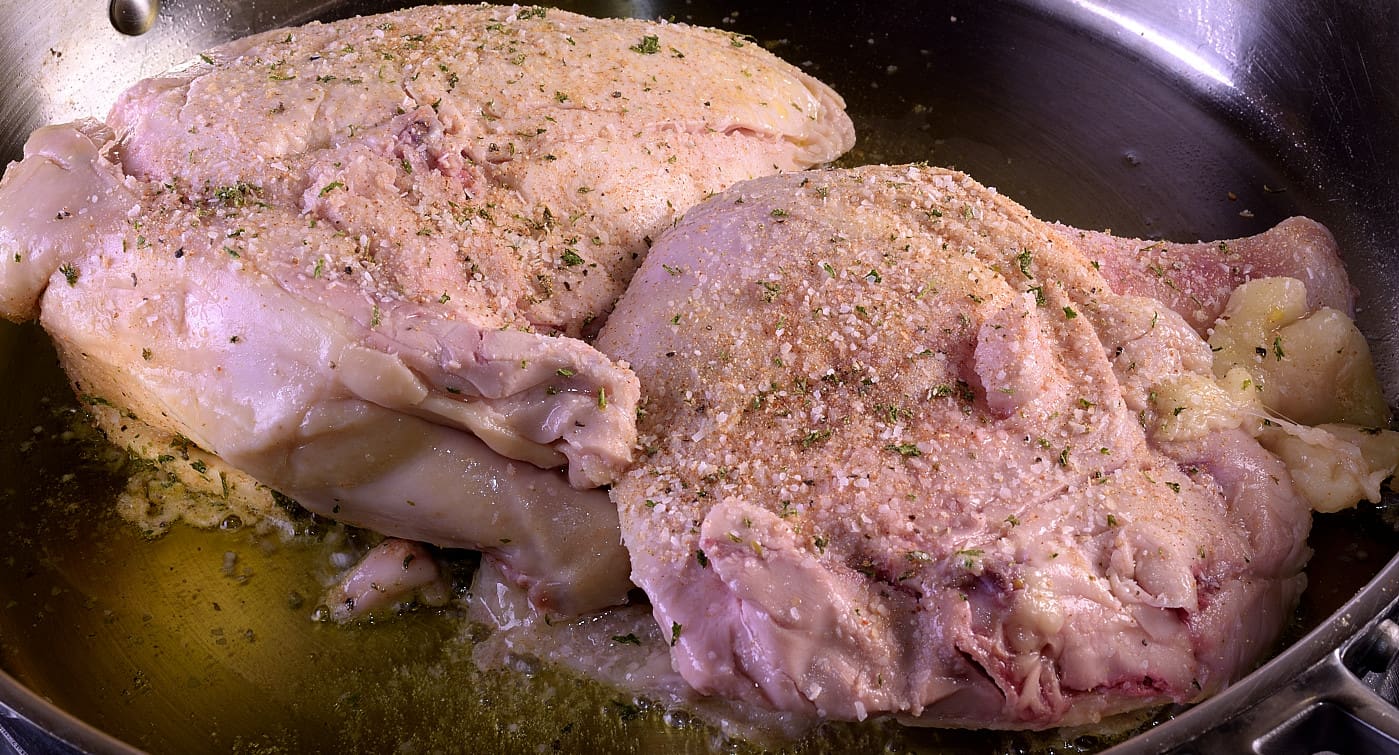
Season the meat side of the chicken. Listen for a slow sizzle. A popping noise means the pan is too hot. A simmering, steaming sound means the pan is too cool. An infrared thermometer should read approximately 250 F/121 C.

Place the weight on top and allow at least half an hour on the skin side.
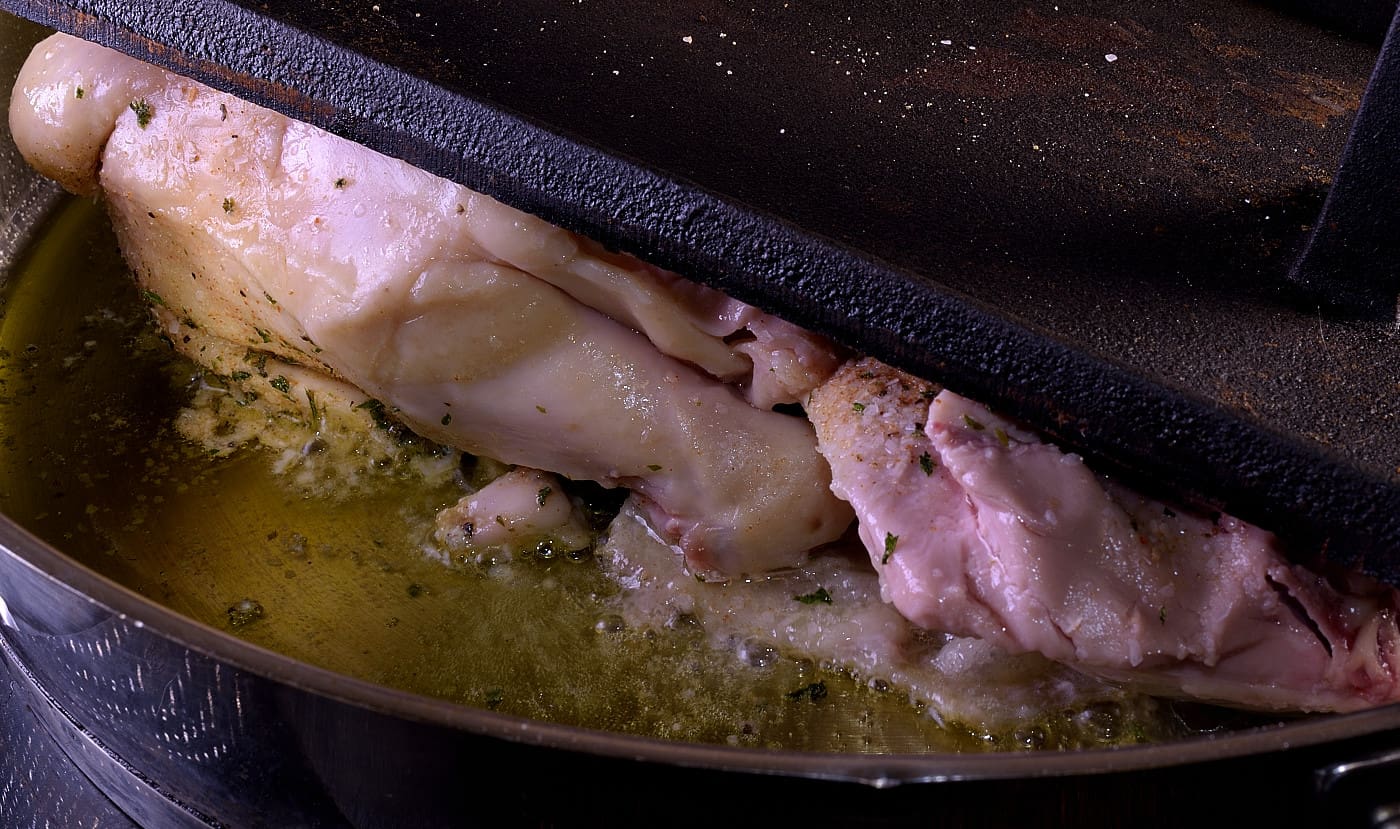
Rotate the pan periodically but avoid moving the chicken itself.
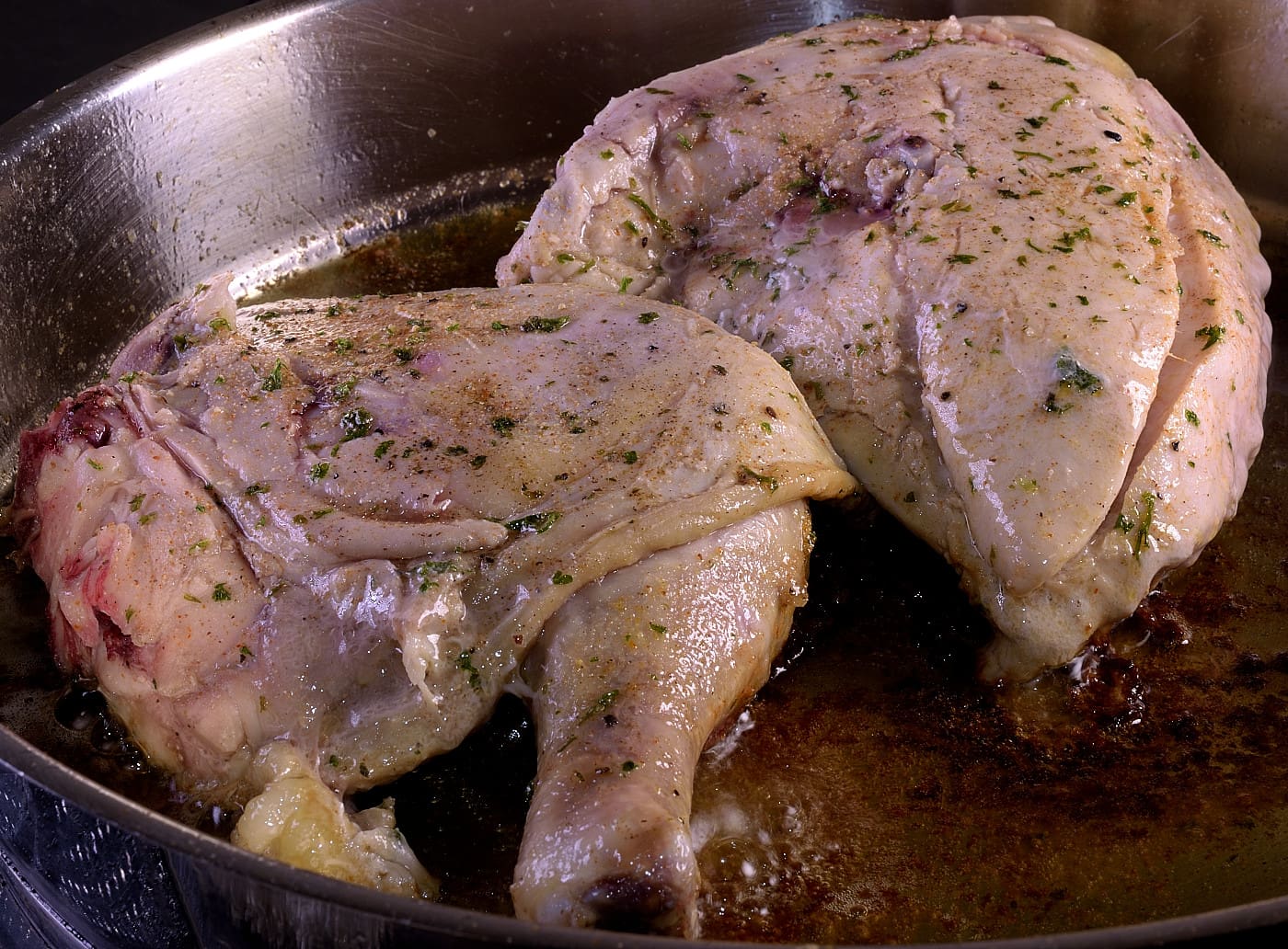
The color on the bottom of the pan is usually a good representation of the color of the skin. You can also carefully lift up the leg to evaluate degree of browning.
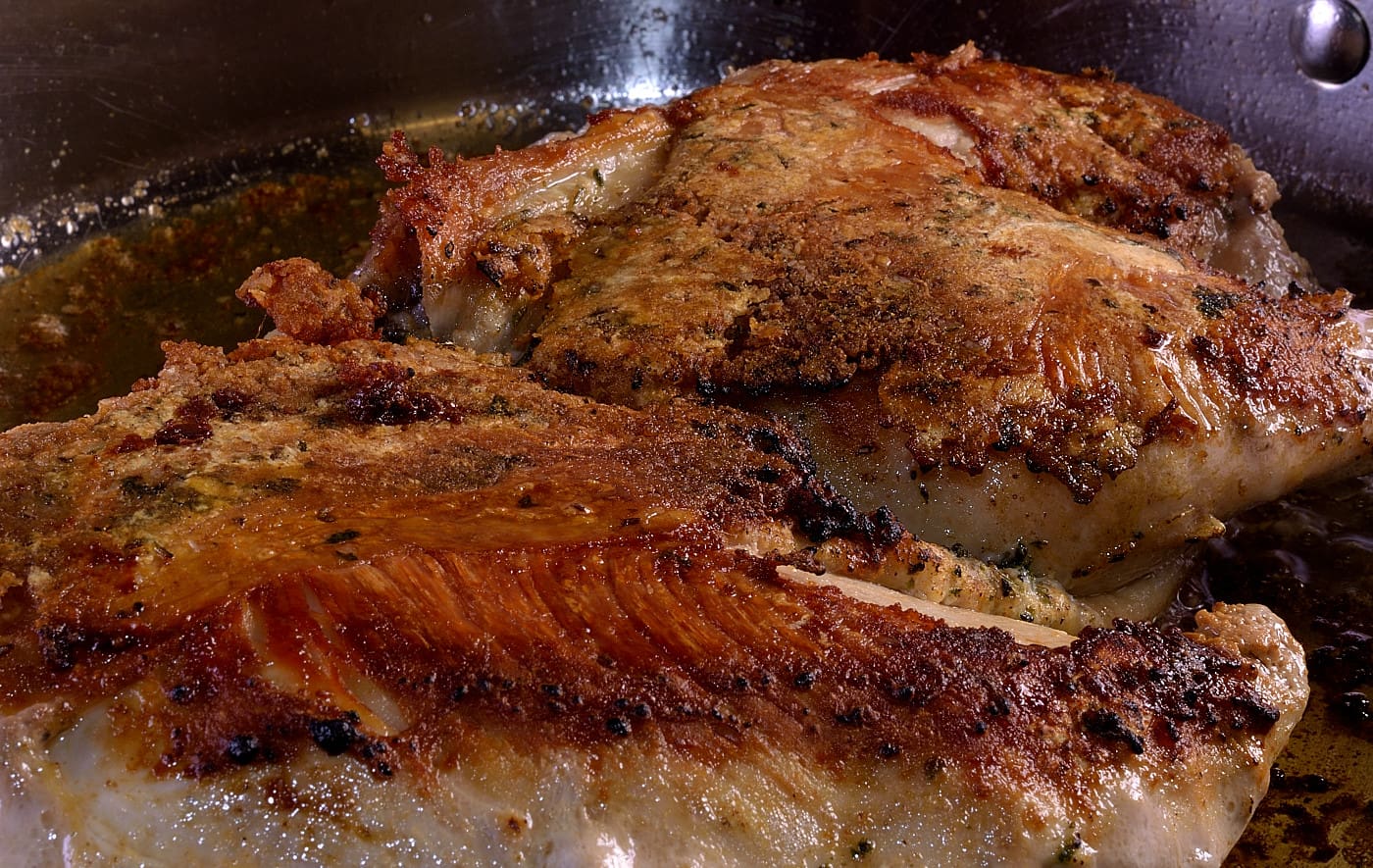
Once you get the desired color on the skin side, carefully turn the chicken over. Continue searing for another five minutes. Carefully remove the chicken from the pan and set aside.
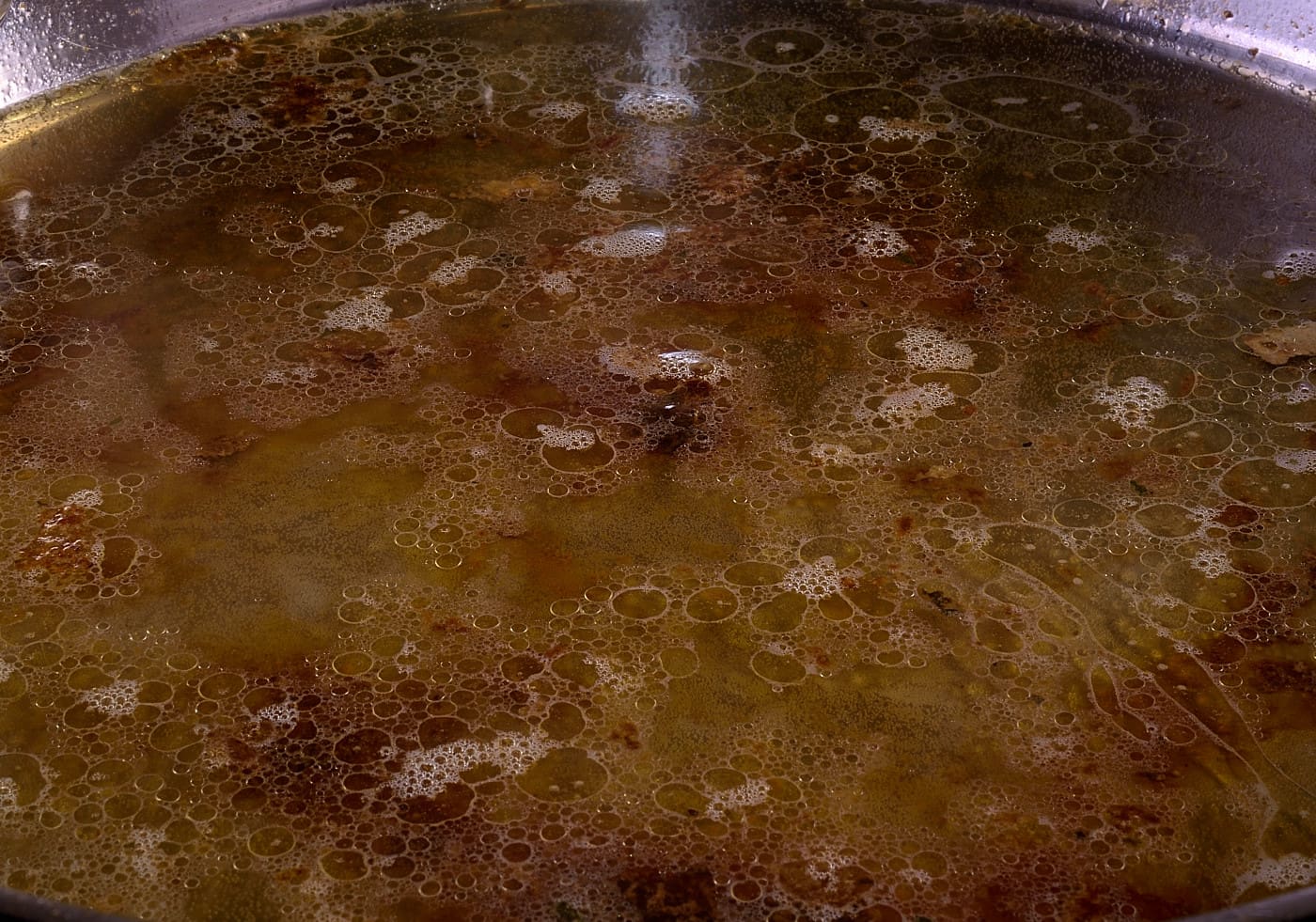
Add 1 cup/225 ml of water or unseasoned stock to the pan.
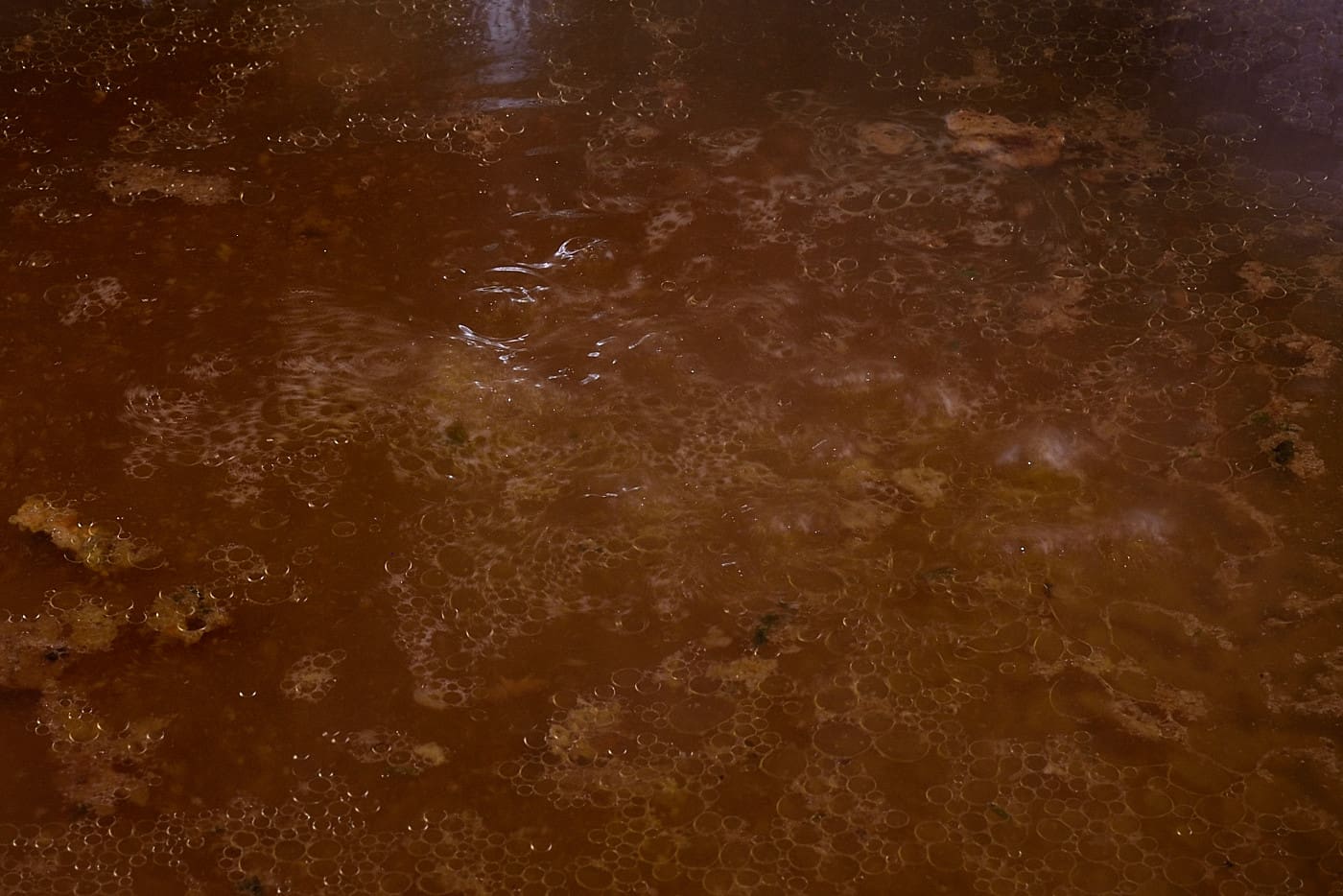
Return to boil and simmer to remove the debris from the bottom of the pan.
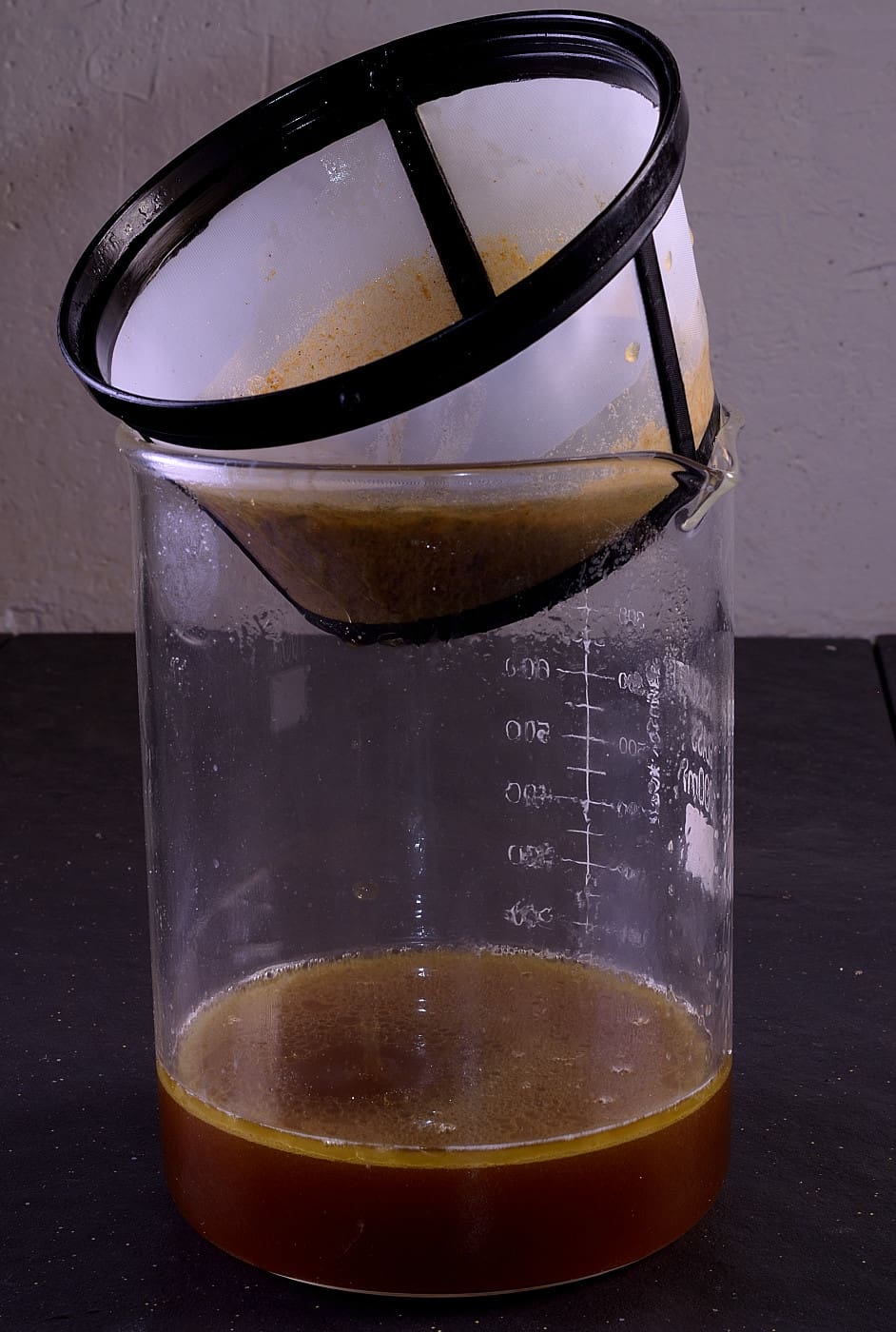
Pour through a reusable coffee filter or moist paper towel.
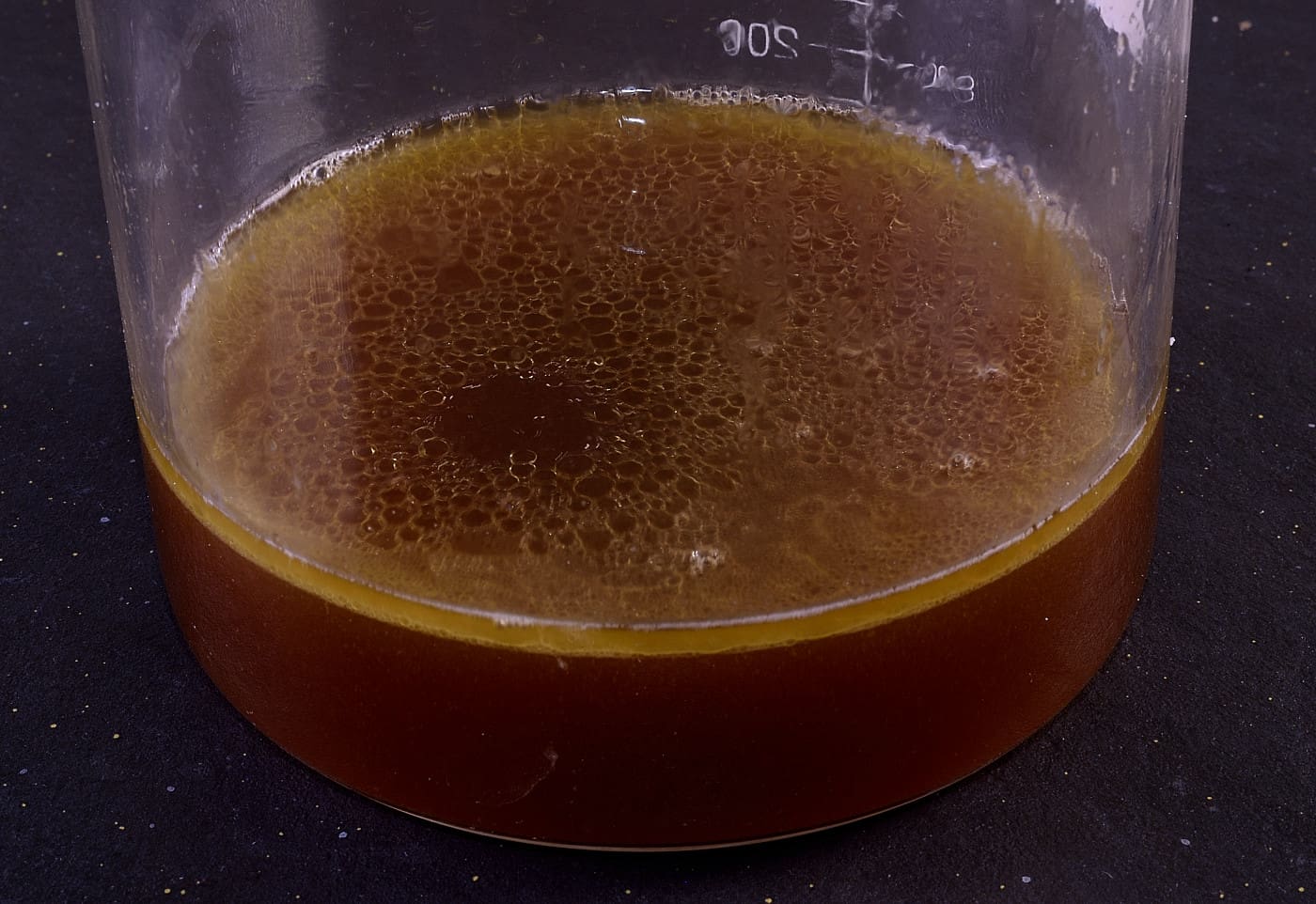
This jus is full of flavor.

Cut the chicken into serving size pieces and drizzle some of the juice over it.
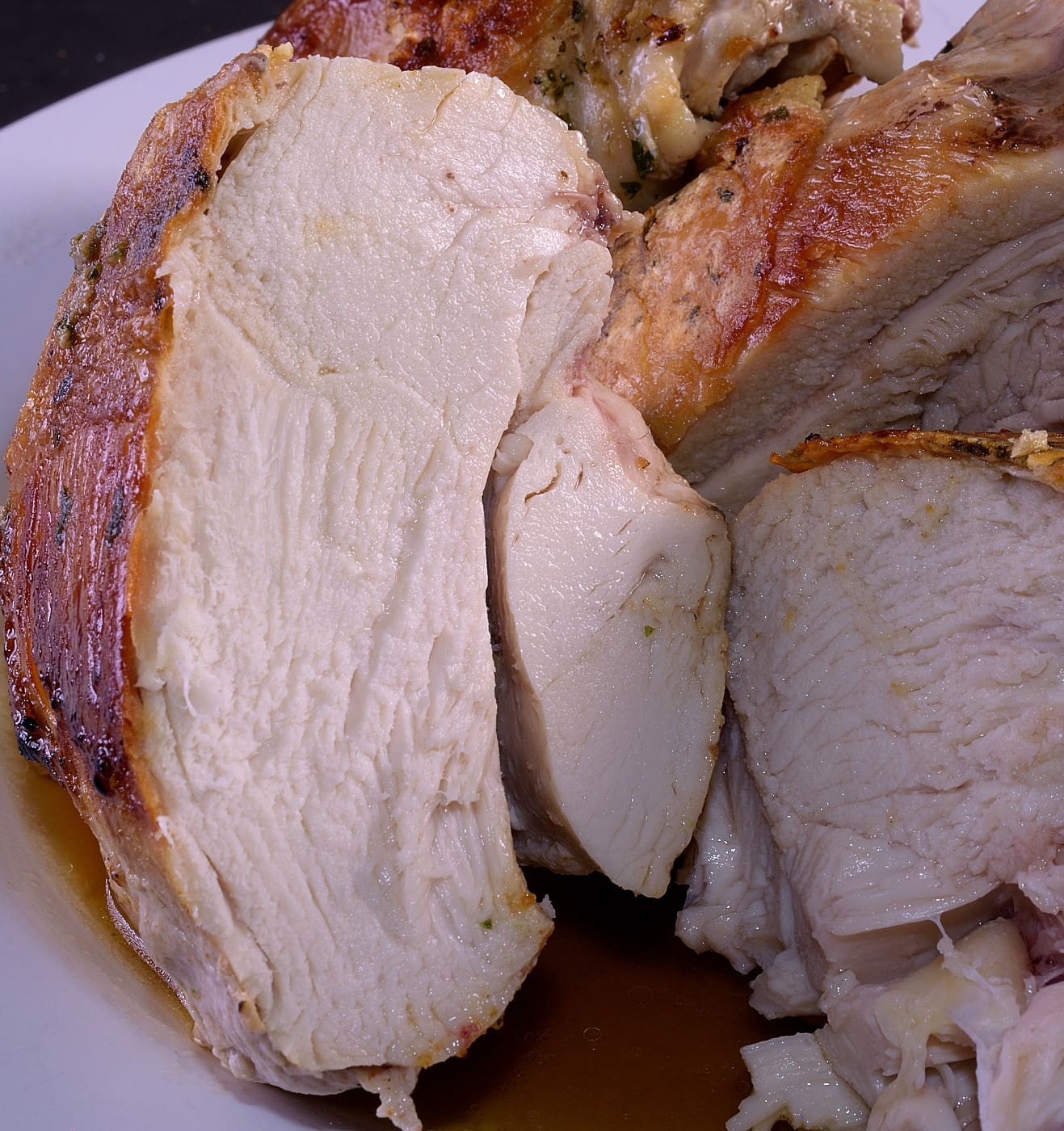
Surprisingly juicy. Hard to believe until you see it the first time you do it. Very simple.
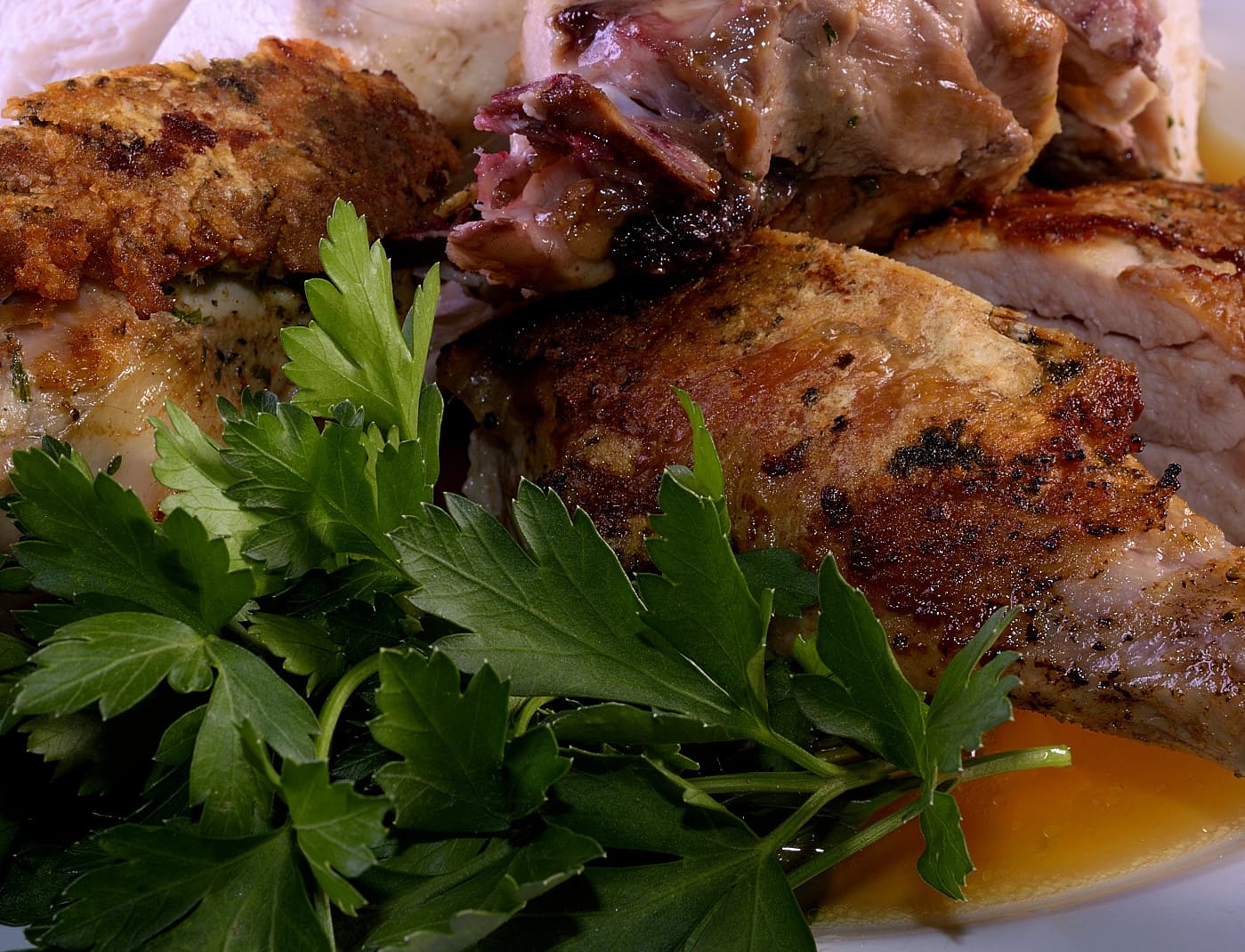
Cutting a whole chicken in halves.
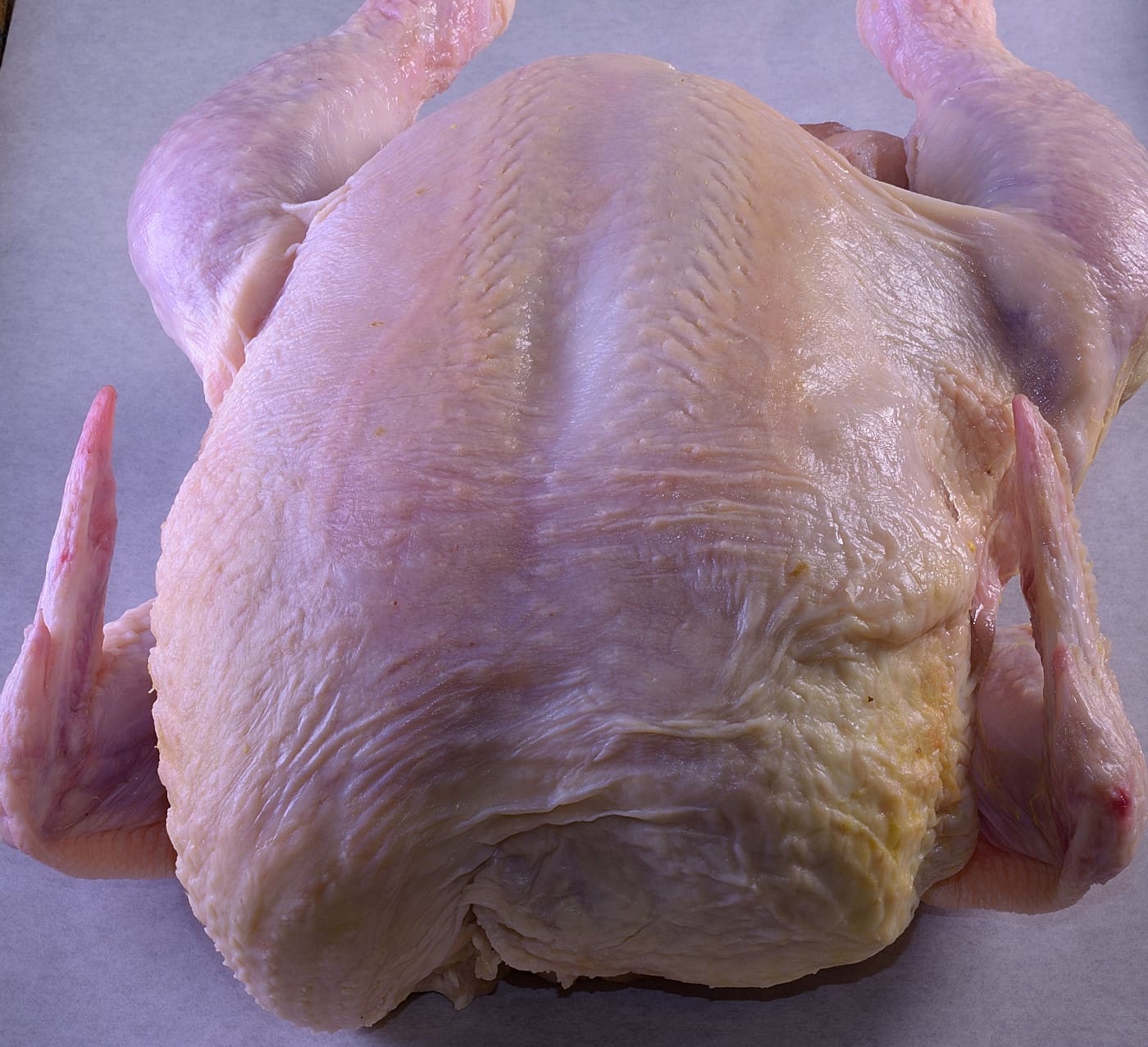
Remove the neck and giblets from the chicken and set aside. 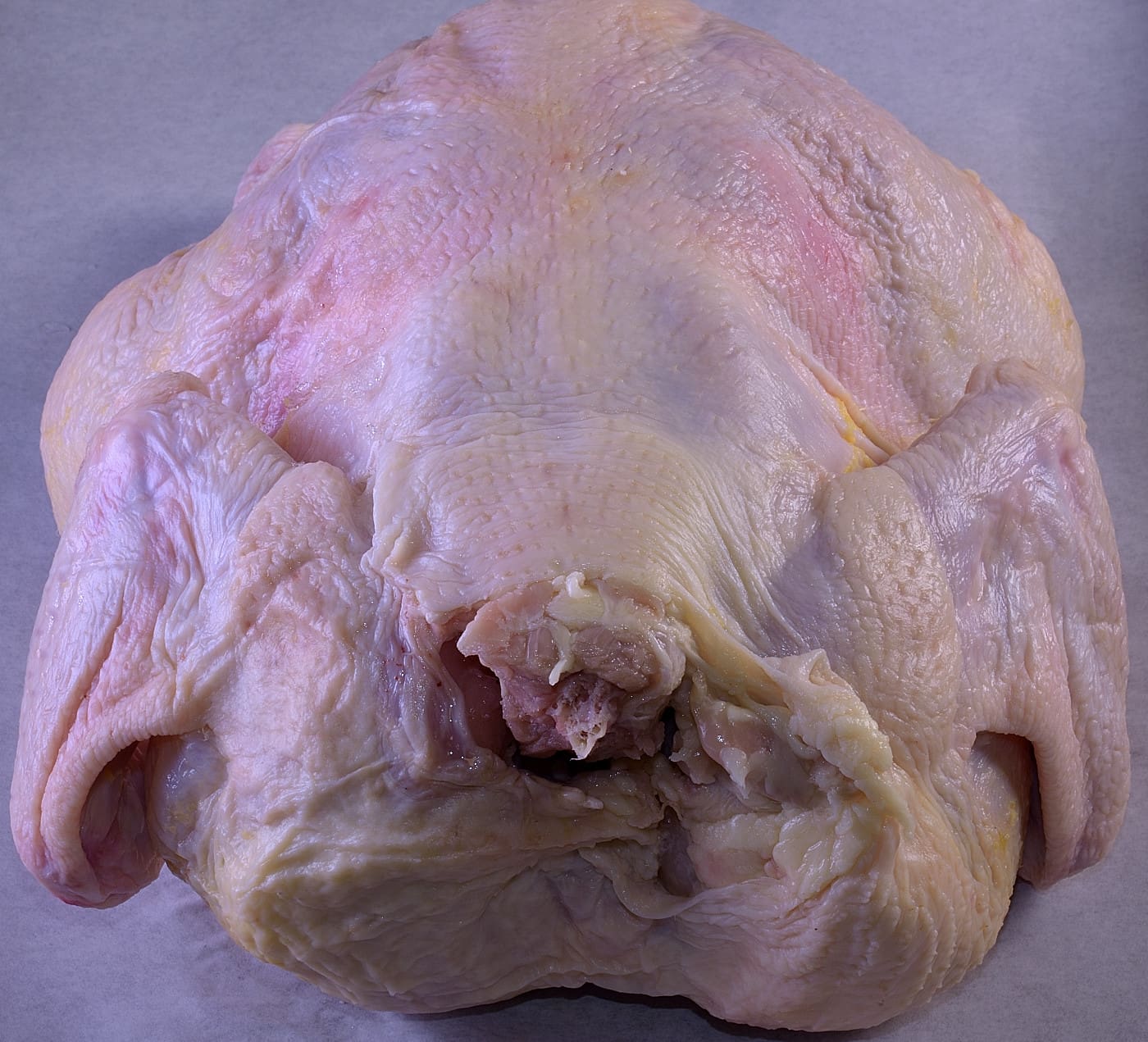
Position the chicken with its breast down and the neck pointing towards you.
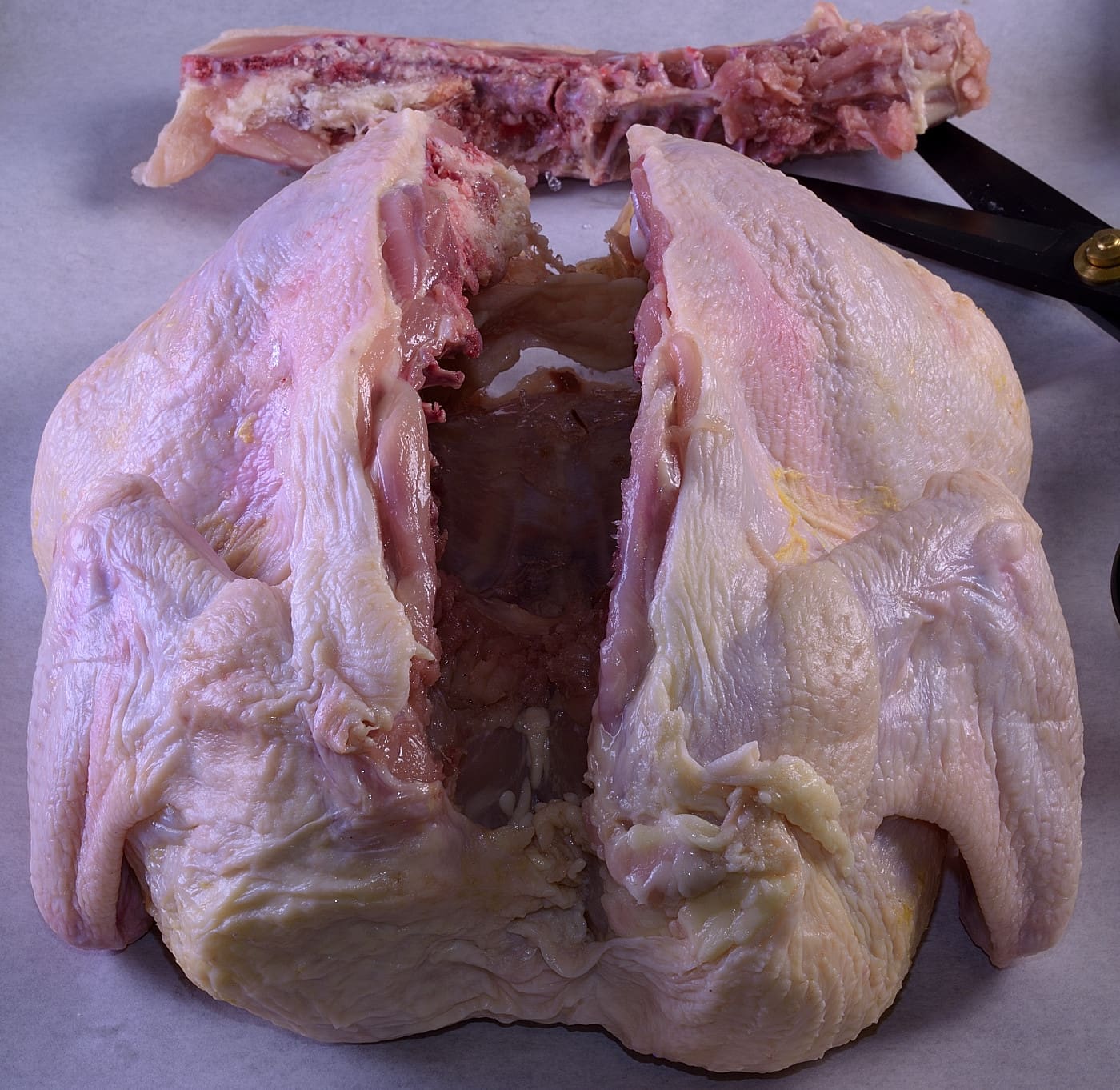
Use shears to cut the ribs along the neck bone and then the joint connecting the thigh to the carcass.
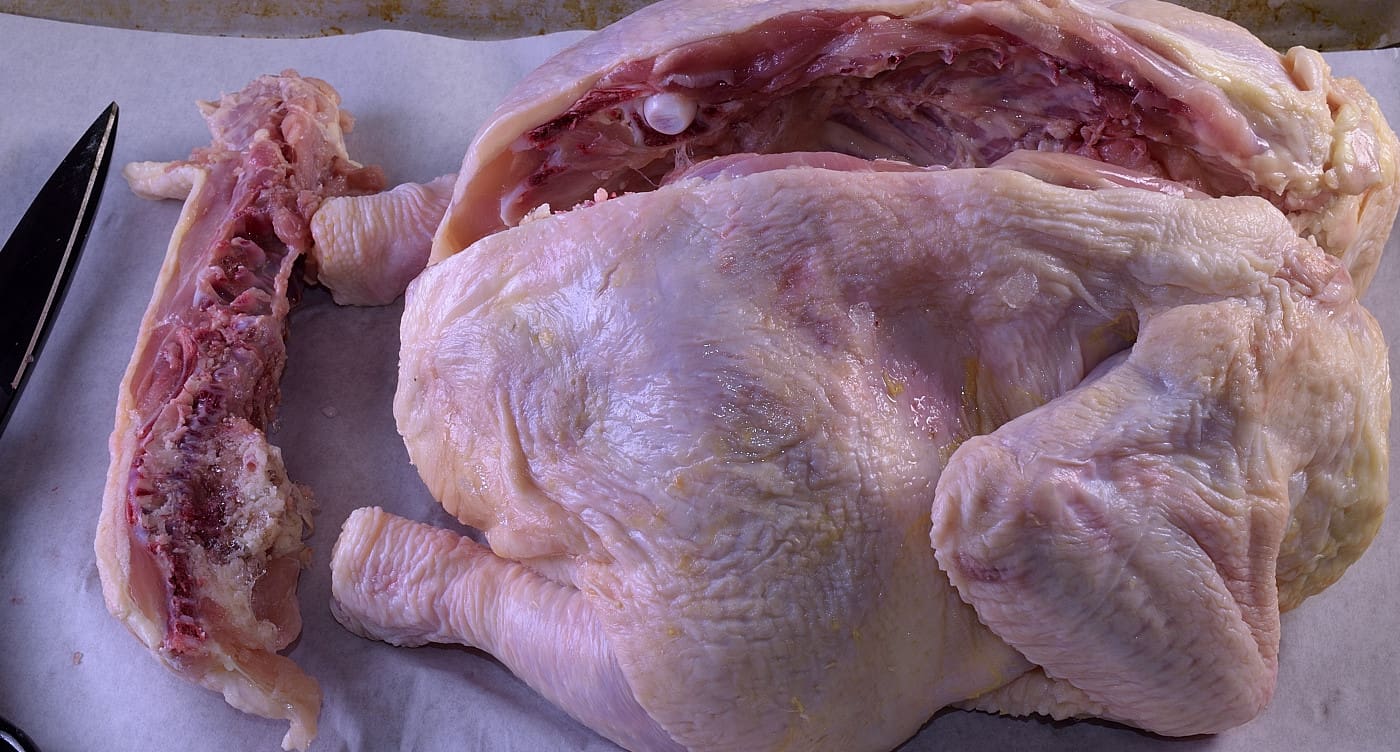
It’s easier than it sounds.
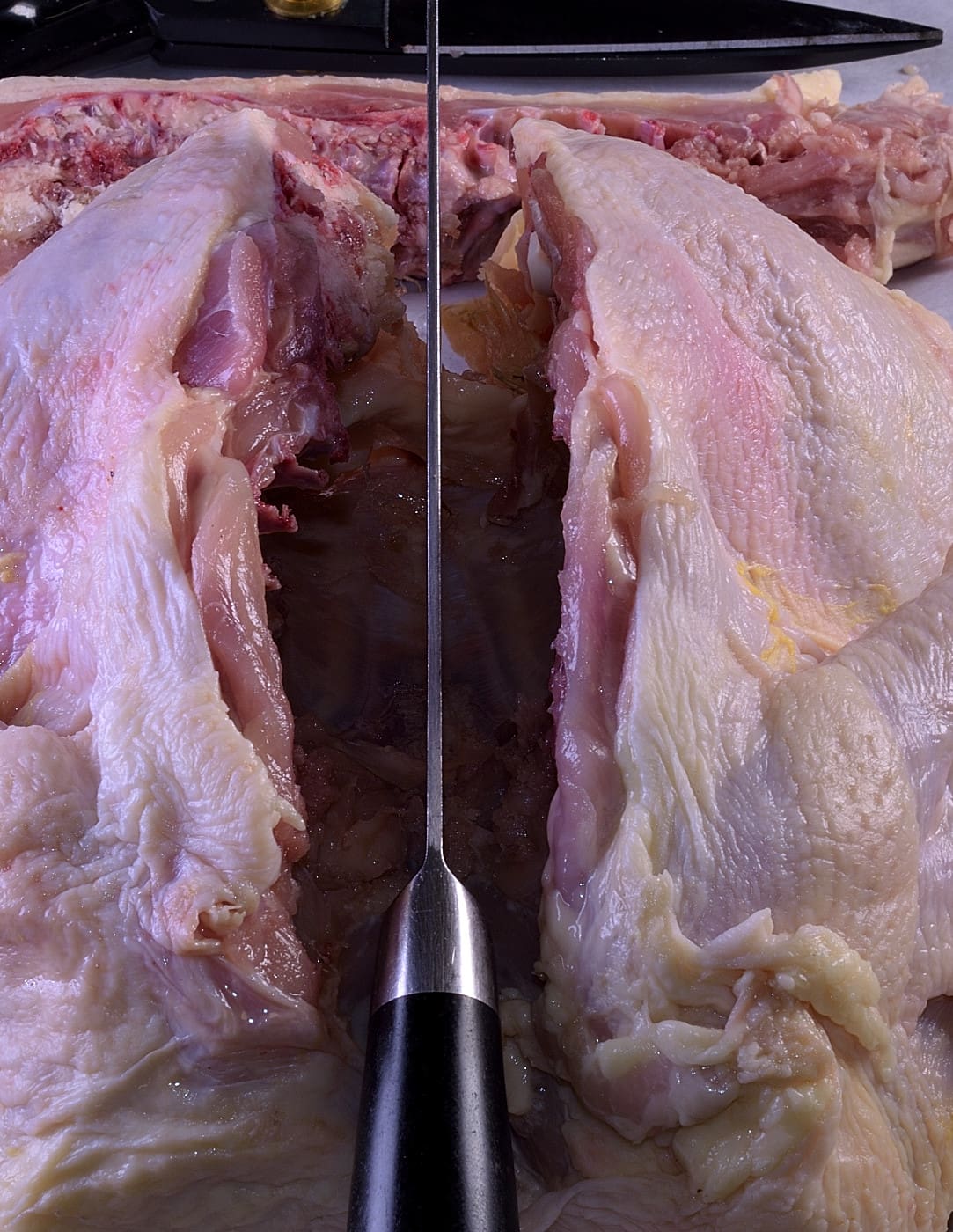
Use a knife to begin to mark the breast bone and bend the chicken apart to expose.
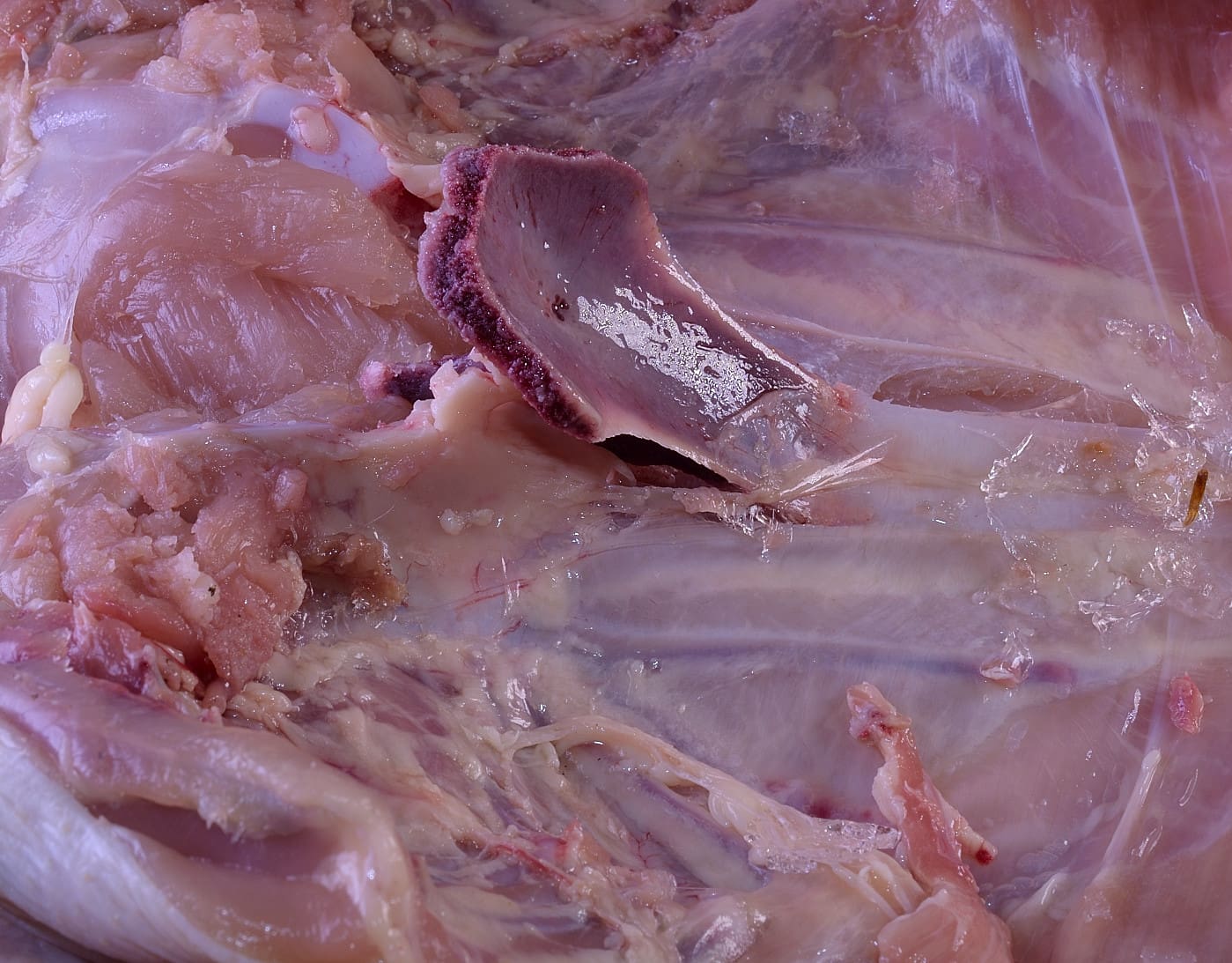
Pull out the breast bone.
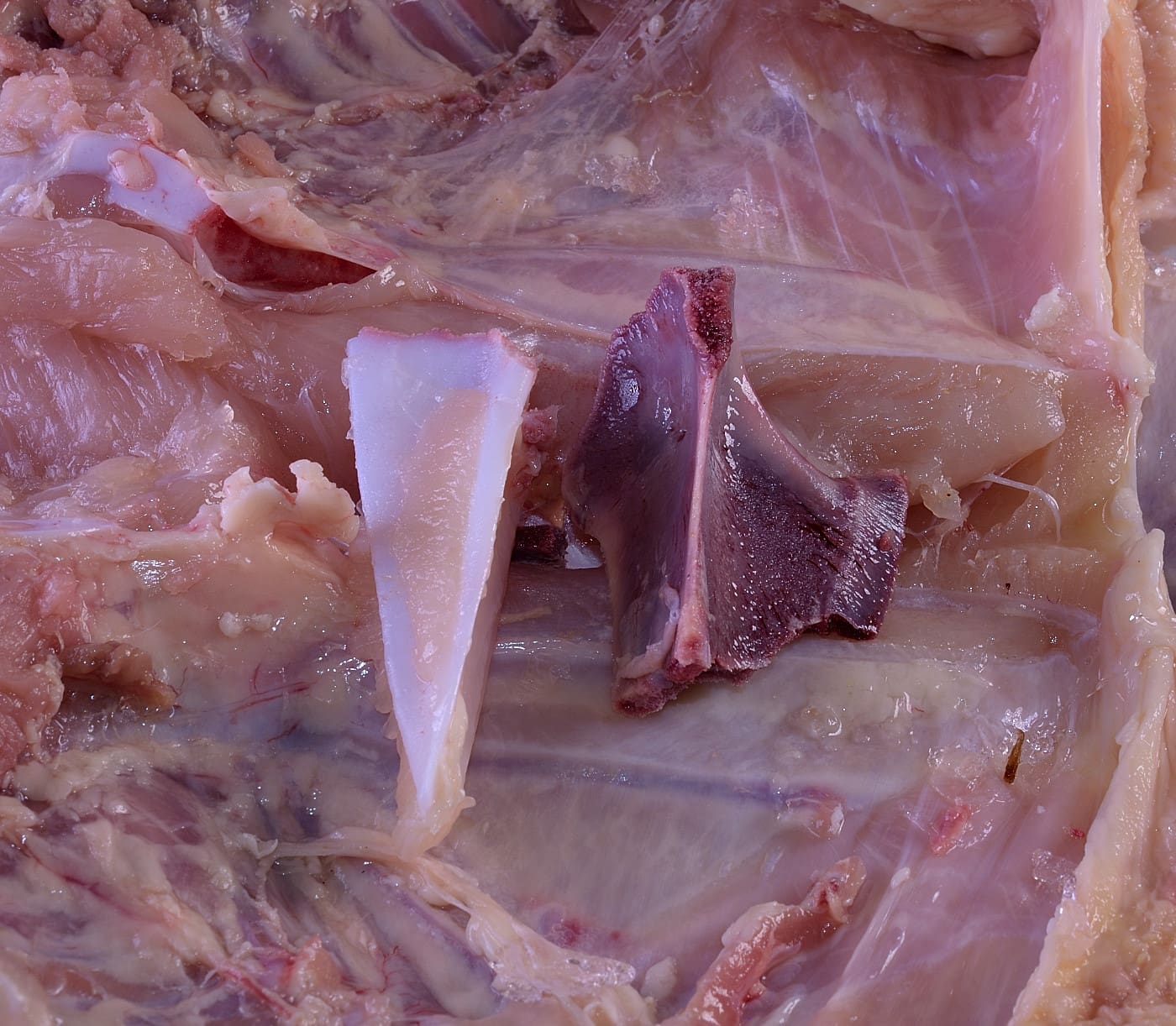
and the cartilage.
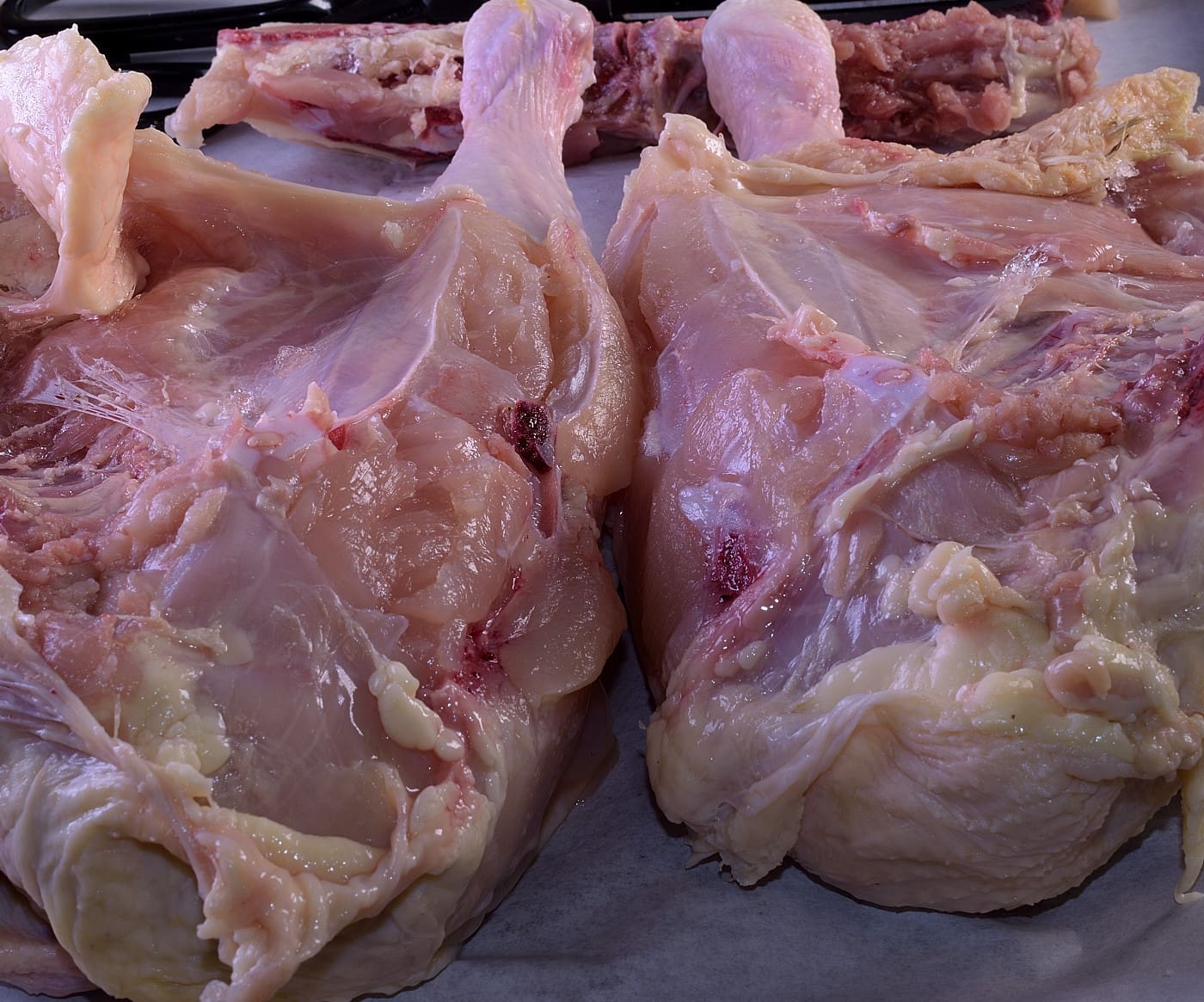
Finish cutting the chicken in half.
